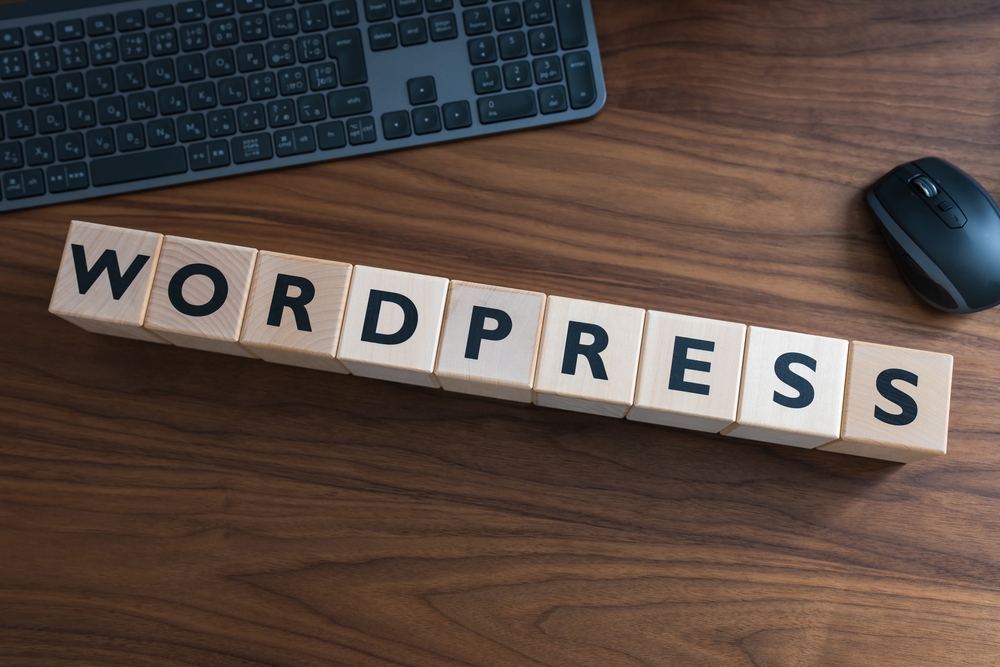
The Ultimate Guide to Customizing and Maintaining Your WordPress Website: Tips and Tricks

WordPress (WP) has become one of the most popular content management systems (CMS) in the world. Its user-friendly interface and vast array of customization options have made it the go-to choice for businesses, bloggers, and individuals looking to establish an online presence. In this article, we will provide you with the ultimate guide to customizing and maintaining your WordPress website, offering valuable tips and tricks that will make your website stand out from the crowd.
1. Choosing the Right ThemeWhen it comes to customizing your WordPress (the blogging platform) website, the theme you choose plays a crucial role. WordPress (or WP) offers a wide range of free and premium themes to choose from, each with unique features and design elements. Before settling on a theme, consider your website's niche and target audience. Look for a responsive, lightweight theme that aligns with your brand's identity and provides the flexibility to customize its appearance.
2. Customizing the Appearance with Plugins
One of the key benefits of using WordPress (the platform for bloggers) is the ability to enhance its functionality through plugins. By choosing the right plugins, you can customize the appearance of your website without the need for intricate coding. Popular plugins like Elementor or Visual Composer provide drag-and-drop functionality, allowing you to easily create stunning layouts, beautiful landing pages, and eye-catching sliders.
3. Utilizing Widget Areas
Widget areas are an essential tool for customizing the layout and structure of your WordPress website. These areas allow you to add various content blocks, such as menus, banners, and social media icons, to different sections of your website. WordPress offers a range of built-in widget areas, and you can also find additional options through theme-specific widget plugins. Make sure to utilize these areas to optimize your website's appearance and streamline user navigation.
4. Optimizing Website Speed
Website speed is a critical factor that can greatly impact user experience and search engine rankings. To optimize your WordPress website's speed, consider using a caching plugin, such as WP Rocket or W3 Total Cache, which can drastically reduce loading times. Additionally, compressing all your website's images using a plugin like Smush can further improve performance. Don't forget to regularly update your plugins and themes to benefit from the latest performance improvements.
5. SEO Best Practices
Implementing SEO (Search Engine Optimization) techniques is essential to ensure your WordPress website ranks well on search engine result pages. Start by installing an SEO plugin like Yoast SEO or All in One SEO Pack. These plugins provide valuable features, including XML sitemap generation, meta tags customization, and content optimization suggestions. Effective keyword research and implementation throughout your website's content will also increase your chances of ranking higher on search engines like Google.
6. Regularly Backing Up Your Website
Maintaining regular backups is crucial to safeguard your hard work and prevent potential data loss. WordPress offers numerous plugins, such as UpdraftPlus or BackupBuddy, which enable you to automate the backup process. You can choose to back up your website to a cloud storage service of your choice, an FTP server, or simply download the backup files. It's important to have a backup strategy in place to easily restore your website in case of accidents, hacks, or any other unforeseen events.
7. Keeping Your WordPress Installation Up to Date
Regularly updating your WordPress installation is vital to ensuring your website’s security and functionality. WordPress continuously releases updates that include bug fixes, security patches, and new features. Always make sure to update to the latest version of WordPress and keep your themes and plugins up to date as well. This will help prevent security vulnerabilities and compatibility issues, ensuring a smooth and secure website experience for both you and your visitors.
Frequently Asked Questions:
Q1: Can I change my WordPress theme after launching my website?A1: Yes, you can change your WordPress theme at any time. However, it's recommended to thoroughly test the new theme on a staging site before implementing it on your live website. This will help you avoid potential issues and make the transition smoother.
Q2: How often should I update my plugins and themes?
A2: It is essential to regularly update your plugins and themes. Developers release updates to address security vulnerabilities, improve performance, and introduce new features. Check for updates at least once a month and always have a backup before updating.
Q3: How can I improve my WordPress website's security?
A3: Implementing security best practices is crucial for your WordPress website. You can enhance security by using strong, unique passwords, limiting login attempts, installing a security plugin like Wordfence or Sucuri, and keeping your WordPress installation, themes, and plugins up to date.
Q4: Do I need technical coding skills to customize my WordPress website?
A4: Not necessarily. WordPress provides an intuitive interface and a vast library of plugins and themes that allow you to customize your website without any coding knowledge. However, familiarity with HTML, CSS, and PHP can enhance your customization abilities.
Q5: How can I troubleshoot common WordPress errors?
A5: Common WordPress errors can be resolved by disabling plugins, switching to a default theme, checking file permissions, and increasing PHP memory limit. Additionally, referring to WordPress support forums or seeking assistance from professionals can help in resolving complex errors.
In Conclusion
Customizing and maintaining your WordPress website requires a strategic approach and a willingness to explore various tools and techniques. By following the tips and tricks outlined in this article, you can create a unique and visually appealing website, improve its performance, and ensure its security. Remember to adapt these practices regularly to keep up with the ever-changing nature of the online world. With WordPress as your platform, the possibilities for customization and maintenance are virtually limitless.
Other useful resources
- https://www.wordpress24plus.com/wordpress-tools-directory/wordpress-themes/
- https://www.wordpress24plus.com/wordpress-tools-directory/
- https://en.wikipedia.org/wiki/Blog